
The U.S. military has launched an investigation into the killing of Iraqi civilians by U.S. forces in a raid last week. Iraqi police have accused American troops of murdering 11 civilians in the assault. The dead included five children and four women and ranged in age from 6 months to 75 years old. We go to Baghdad to speak with the Knight Ridder reporter who broke the story. [includes rush transcript]
The US military has launched an investigation into the killing of Iraqi civilians by US forces in a raid last week.
Iraqi police have accused American troops of murdering 11 civilians in the assault. According to an Iraqi police report first obtained by the Knight Ridder news agency, the villagers were killed after US troops herded them into one room of a house near the city of Balad. The dead included five children and four women and ranged in age from 6 months to 75 years old. The report said the troops burned three vehicles, killed the villagers’ animals and blew up the house. Local medics said the bodies of those killed had bullet wounds to the head. The US military contends that only four civilians were killed in the raid after they came under fire while trying to capture an al-Qaeda suspect. Photographs in the aftermath of the incident show locals cradling the bodies of dead children, and laying out their bodies in an emotional burial ceremony.
The report of the killings is unusual because it originated with Iraqi police and because Iraqi police were willing to attach their names to it. It was compiled by the Joint Coordination Center in Tikrit, a regional security center set up with United States military assistance.
The investigation into the killings comes hot on the heels of a US Navy criminal probe into reports that marines intentionally shot 15 civilians dead near the western town of Haditha last November.
Several Iraq veterans recently told BBC’s NewsNight program that the Haditha attack was not an isolated. Specialist Michael Blake, who served in Balad, said it was common practice to “shoot up the landscape or anything that moved” after an explosion. Another veteran, Specialist Jody Casey said he was always advised to carry a shovel, which he could plant on any civilian victims to make it look as though they were digging roadside bombs.
We go to Baghdad to speak with the reporter Matthew Schofield. He is the European Bureau Chief for the Knight Ridder news agency, currently reporting from Iraq. He first obtained the Iraqi police report that accused US troops of the civilian killings.
- Matthew Schofield, European Bureau Chief for the Knight Ridder news agency speaking to us from Baghdad.
- Read articles by Matthew Schofield
Transcript
AMY GOODMAN: We go now to Baghdad to speak with reporter Matthew Schofield. He’s the European Bureau Chief for Knight Ridder news agency, currently reporting from Iraq, the first to obtain the Iraqi police report that accused the U.S. troops of the civilian killings. We welcome to you Democracy Now!, Matthew.
MATTHEW SCHOFIELD: Thanks very much, Amy.
AMY GOODMAN: Can you explain exactly what you know at this point?
MATTHEW SCHOFIELD: Well, the story, as you and Juan just outlined it, pretty much goes through the basics of the story. We’ve talked quite a bit further in the last couple days with people surrounding the story. But what we have is a divergence on the story between the two — there are two accounts. There’s a U.S. military account, and then there’s an Iraqi police account of what happened.
As you know, the U.S. military account is that after showing up and getting into a shootout to get into this house, the house collapsed during the shootout. People were killed either in the shootout or by the collapsing house. They left. They found four bodies and left. They found this suspect. They arrested him. And that’s pretty much that story.
The other story is that the house was standing when the U.S. troops went in. They were herded into one room — eleven people herded into one room, executed. U.S. troops then blew up the house and left.
We were talking with the police officer who was first on the scene earlier today. He explained the scene of arriving. He said they waited until U.S. troops had left the area and it was safe to go in. When they arrived at the house, it was in rubble. I don’t know if you’ve seen the photos of the remains of the house, but there was very little standing. He said they expected to find bodies under the rubble. Instead, what they found was in one room of the house, in one corner of one room, there was a single man who had been shot in the head. Directly across the room from him against the other wall were ten people, ranging from his 75-year-old mother-in-law to a six-month-old child, also several three-year-olds — a couple three-year-olds, a couple five-year-olds, and four other — three other women.
Lined up, they were covered, and they had all been shot. According to the doctor we talked to today, they had all been shot in the head, in the chest. A number of — you know, generally, some of them were shot several times. The doctor said it’s very difficult to determine exactly what kind of caliber gun they were shot with. He said the entry wounds were generally small and round, the exit wounds were generally very large. But they were lined up along one wall. There was a blanket over the top of them, and they were under the rubble, so when the police arrived, and residents came to help them start digging in, they came across the blankets.
They came across the blankets. They picked the blankets up. They say, at that point, that the hands were handcuffed in front of the Iraqis. They had been handcuffed and shot. And the Iraqi assumption is that they were shot in front of the man across the room. They came to be facing each other. There is nothing to corroborate that. The U.S. is now investigating this matter, along with the Haditha matter. That’s kind of where we stand right now.
AMY GOODMAN: We’re talking to Matthew Schofield. He’s European Bureau Chief for Knight Ridder news agency, speaking to us from Baghdad, recently wrote an article on how the Iraqi police have accused the U.S. troops in Balad of executing eleven people from a six-month-old to a 75-year-old woman. Juan?
JUAN GONZALEZ: Matthew, you mentioned the doctor that you spoke to. Was this a doctor at the local hospital? Was this a medical examiner?
MATTHEW SCHOFIELD: This was the doctor who conducted the autopsies.
JUAN GONZALEZ: But he said that he could not determine the caliber of the bullets that were used in the killings.
MATTHEW SCHOFIELD: Yeah. What we’re looking at — I mean, I think when we hear autopsy, especially with all the crime shows on television, we have this image of kind of scientific wonder stuff going on. As he explained it, he said, “Listen, I don’t have any equipment to do this with. What I have are my eyes. I examined the bodies by looking at the bodies.” He did not find any powder residue on the bodies. Now, when we see the same in the United States and Canada, in Europe, we see this and we say, 'Okay, that means that there was no — there might not have been powder burns, so maybe the shots didn't come from a very close range.’ It doesn’t necessarily mean that, but it can mean that.
However, in this case, he said, “I was looking at the bodies. I didn’t see the powder.” What he means is not that he did chemical tests and sort of things like that. He said, “I physically couldn’t see the powder.” If you’ve seen the pictures of the bodies, they were covered in the concrete rubble. This thin powder of concrete covered the entire — covered them all. They were almost white from this powder, you know, chalky white from this powder. And these sorts of things — the investigation is hampered by the fact that, he says, “Listen, this was eleven bodies came into our office. This is not a particularly big deal. We’re very busy. We get between five and fifteen bodies a day, anyway.”
JUAN GONZALEZ: And have you been able to determine what unit of the U.S. military was involved in this action?
MATTHEW SCHOFIELD: The U.S. Military so far has refused to identify the unit. We’ve had reports from other sources on what the unit is, but until we confirm that, I don’t feel at ease going out, because the U.S. is going to know the unit much better than anyone else.
AMY GOODMAN: You know, these stories are coming out one after another. The Haditha report, now the Navy launching a criminal investigation. This report that you have made, coming out of Balad. This is the week that President Bush is launching another sort of offensive, where he goes out and speaks to the public about the good-news stories that are coming out of Iraq and really going after the media, saying they choose only the negative stories. Your response?
MATTHEW SCHOFIELD: Well, if you’re looking at these two stories as isolated incidents of times when Iraqis believe Americans have gone out of control and killed people, that’s missing the mark by a wide margin. This is commonplace everyday Iraqi belief. The belief over here is that this is happening all the time. What’s different in these cases is that there is some level of credence given to it by U.S. investigations into the matter, by police reports.
In the county next to — in the province next to Balad is Diala. Diala has officially named this “the year of the cop,” because they’re very pleased with the progress Iraqi police have been making, and they want to highlight the increasing professionalism of the police. What’s going on in Balad is the police are going through their investigation, and they are targeting — they are targeting Americans as the perpetrators in this. It’s very similar to any crime, I suppose, at that level. And they’re going about their business. And when we talk to them, they’re saying, “Listen, we don’t have any axe to grind here. This is just the way we’re doing our work.”
Now, if Bush wants to come out and say that we’re ignoring the good news, I think there is, on the other side, an effort to ignore the depth of the bad news here.
AMY GOODMAN: And BBC specialist Michael Blake, serving in Balad, saying it’s common practice to shoot up the landscape or anything that moved after an explosion, linking, you know, these two stories very much, Balad and Haditha, A bomb goes off and then the attacks in the residential area around it by the U.S. military in retaliation.
MATTHEW SCHOFIELD: I’ve been in several car bomb I.E.D. attacks, and the amount of gunfire laid down immediately after one of these when you’re in the presence of security forces is amazing. There are thousands of bullets flying through the air at these moments. And all you can do is hit the ground and wait for it to end.
AMY GOODMAN: I want to thank you very much for being with us. Matthew Schofield, European Bureau Chief for Knight Ridder news agency, speaking to us from Baghdad. Be safe.

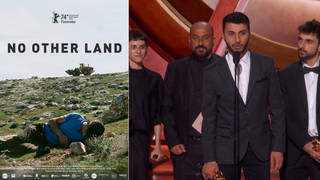
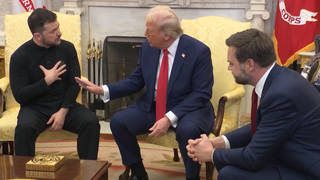
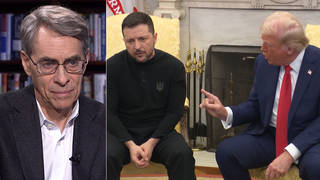
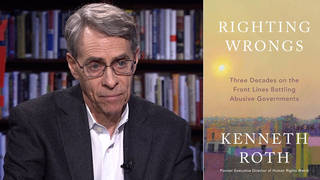
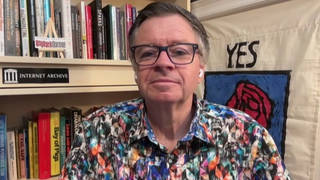
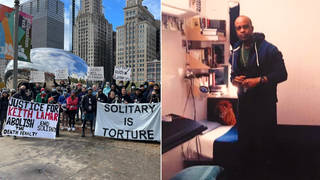

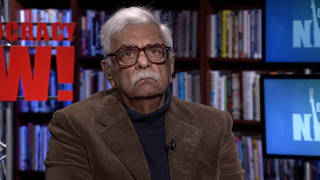

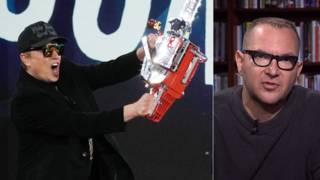
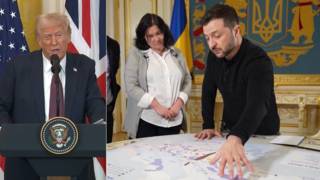
Media Options